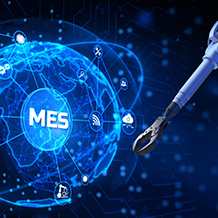
Smart story
Building a Smart Hospital of the Future
A conversation with Deloitte's Emily Duncan and Kurt Banas
"How can I do more with less?"
That question is plaguing many organizations post-pandemic but arguably none more so than those in the health care industry. As understaffed, overloaded health care systems reach a breaking point, the need for a smarter, integrated approach is more apparent than ever.
Emily Duncan, senior manager with Deloitte Consulting, and Kurt Banas, principal with Deloitte Consulting, are helping one of the largest health care systems in the world apply a “smart factory” approach to their organization.
“Our client realizes that concepts from other industries are also applicable to health care and should be leveraged,” says Duncan.
Built upon the ideas and tools exemplified at The Smart Factory by Deloitte @ Wichita experiential center, Deloitte is partnering with a leading health care system to create a “smart hospital” of the future—and setting the standard for an entire industry.
From factory floor to hospital floor
Even though a hospital floor is different from a factory floor, there are more similarities than meet the eye. Patients certainly must be treated differently than data points, but there’s valuable information available to make a hospital more efficient—and more effective. "It's all about operating at the lowest cost with extremely high-quality outcomes, and our client recognizes that," says Banas.
The health care organization drew inspiration from different sources to build a foundation for this new smart hospital, and much of it came from the use cases we bring to life at The Smart Factory @ Wichita experiential center.
"They keep coming to us because they know that we are innovating at The Smart Factory, and they trust our recommendations and ability to execute," says Duncan. "They welcomed us bringing ideas from outside their industry, which is not common with health care clients. We're excited they took such an innovative and leading approach."
Our client is at the forefront of the industry. Health care
can be resistant to change and behind the curve, and I’m so pleased they want to partner with us on that
innovation and be seen as leaders in the industry.
— Emily Duncan
Senior Manager, Deloitte Consulting
The anatomy of a smart hospital
Seeing that knowledge is power, data is at the heart of the health care system’s transformation. With patient safety and care prioritized, the organization is putting multiple use cases from The Smart Factory @ Wichita to work.
Real-time locating software uses beacons to track movement throughout an organization. In the smart hospital, that means tracking patients, staff, medical equipment, physicians—you name it.
"At any point, we can understand the movement of people and devices throughout the organization and understand bottlenecks to efficiency. And we’ve been using this for years in many other industries," says Duncan.
Computer vision uses artificial intelligence and deep learning models to train cameras to accurately identify and classify objects—and then react to what they “see.” Working with Deloitte, our client is in the beta stage of three computer vision use cases:
- Emergency department (ED) ambulance tracking—Cameras in the ED bays identify when an ambulance arrives and departs, including specific vehicle information such as the ambulance company, rig number, and how long the EMS workers and patient needed to wait, among other data points.
- Patient safety monitors—Trained algorithms enable cameras to proactively analyze patient behavior and identify whether a patient is at risk of falling. A speaker integrated into the alert system communicates potential risk to the patient and alerts clinicians if a patient is at risk of falling or has, in fact, fallen.
- Inventory management—Trained cameras deployed in a hospital supply closet can detect how much of each item is on hand. For instance, if a bin of syringes is half-empty, the camera can learn that behavior and trigger a reorder of inventory without human intervention.
A custom-developed application on an iPad was created to expedite EMS check-in and check-out and integrates vital patient registration information with the hospital’s electronic health record to speed up patient registration and care.
Through call and text analysis, powered by artificial intelligence and natural language processing, the health care organization can quickly analyze immense volumes of data to understand primary topics and drivers behind patient and clinician communication. Topic modeling is then used to identify common and repeatable tasks with the goal of identifying automation opportunities to improve and streamline patient and clinician communication. Initial findings have resulted in the health care system expanding this work to additional hospitals with the goal of further understanding clinician adoption and utilization of communication tools.
Advancing the future of health care together
This partnership was built upon the use cases seen at The Smart Factory @ Wichita experiential center—but it was also built on trust. The health care system leaned on Deloitte to recommend the best vendors for each solution, based on a respect for our experience and the innovation happening at The Smart Factory. These advancements enable clinicians to act at the top of their license, removing common barriers to care so the health care workers can focus on what matters: spending more time with their patients. And as health systems continue to navigate providing care with increasingly fewer resources, technology like this can help organizations build smart hospitals now and for the future.

